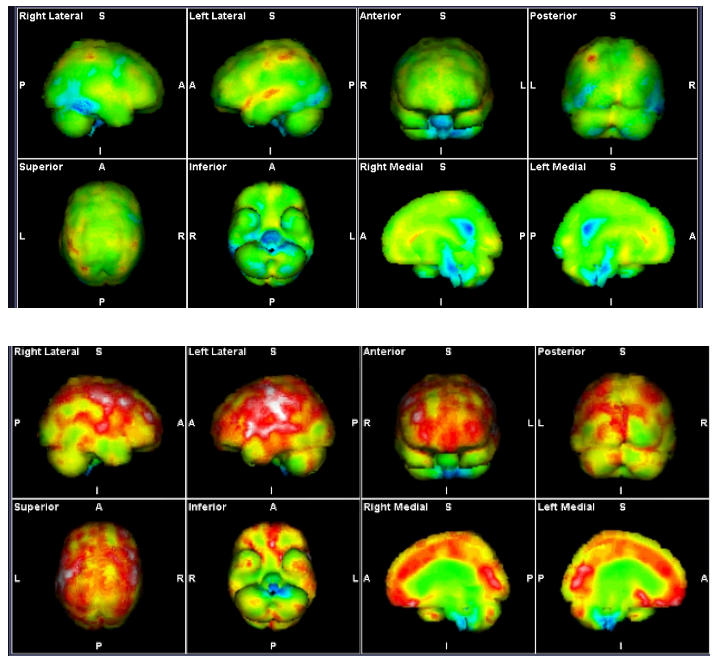Long COVID: Inflammation, Hypoxia, Pericytes, Astrocytes, and Chronic Disease – A Patient Guide
- Graham Exelby
- Sep 6
- 4 min read
Updated: Sep 28
Author: Based on original works by Dr Graham Exelby, Dr Valerio Vittone (PhD)
Date: September 05, 2025
Purpose: This guide combines two research papers—one on inflammation and hypoxia pathways in Long COVID, the other on pericyte and astrocyte dysfunction—into an accessible overview. It explains the science in clear terms, linking symptoms to underlying causes, while highlighting overlaps with conditions like POTS, ME/CFS, and fibromyalgia. For deeper details, refer to the original papers; this focuses on key insights to help you understand and discuss with your healthcare team.
Understanding Long COVID: Not Just "Post-Viral Fatigue"
Long COVID (or PASC) is a chronic, multisystem condition affecting millions, with symptoms persisting or worsening long after the initial infection. It's driven by progressive changes in your immune system, metabolism, and brain vasculature—not a simple recovery lag. The papers describe it as a "network disease" with self-sustaining loops of inflammation, low oxygen (hypoxia), and cell dysfunction.
Core 3-Phase Model (from both papers):
Acute Phase (first 4 weeks): Intense immune response (cytokine storm), mast cell activation, vessel leaks from histamine.
Transition/Subacute Phase: Lingering inflammation, early energy (mitochondrial) issues, and brain drainage (glymphatic) problems.
Chronic Phase: Hypoxia dominates, leading to inefficient metabolism, scarring (fibrosis), and ongoing neurovascular damage.
Key "Hubs" Involved:
Inflammation Drivers: STAT3 (switches on inflammation genes), CCL2 (recruits immune cells), RAGE/NF-κB (senses and amplifies damage), NLRP3 inflammasome (releases cytokines like IL-1β/IL-18; other inflammasomes like AIM2/NLRC4 may contribute).
Hypoxia Hub: HIF-1α (stabilizes under low oxygen, shifts energy use, creates waste buildup like lactate/succinate).
Cell Focus: Pericytes (vessel supporters) and astrocytes (neuron helpers) form a damaged "neurovascular unit," worsening everything.
Genetics Play a Role: "Pathway-cluster" model—clusters of variants (e.g., in TLR4, PEMT, ApoE4) make some people more susceptible, explaining why treatments work variably.
This reframes Long COVID as a treatable, structural issue (e.g., brain hypoperfusion seen on SPECT scans). Brain areas like the thalamus (thinking/fog), brainstem (balance/heart rate), and midbrain are often affected.
The Initial Immune Response: Cytokine Storm and the "Histamine Bridge"
In acute infection, SARS-CoV-2 triggers Toll-like receptors (TLRs) on cells, releasing cytokines (e.g., IL-6, TNF-α) and chemokines (CCL2). Mast cells release histamine, causing vessel leaks and amplifying inflammation via complement system activation.
Histamine's Role: Acts as a "bridge" to chronic issues—direct virus binding or indirect damage keeps it going, leading to fatigue, fog, anxiety, rashes, and dysautonomia.
TLR Paradox: TLR3 helps clear virus but can overdo cytokines; histamine via H2 receptors on brain cells (microglia/astrocytes) tips it to harm.
Patient Insight: If you had early "allergic" symptoms, this explains persistence. Early blockers (H1/H2 antihistamines, LDN) helped many, but delayed cases harden.
Persistent Inflammation: Key Hubs and Loops
As phases progress, hubs create feedforward loops:
STAT3: Activated by IL-6, sustains inflammation, vessel damage, fibrosis (stiff tissues), and shifts to hypoxia.
CCL2: Draws monocytes (immune cells), worsening brain swelling, hypoperfusion, and symptoms like head pressure/weakness.
RAGE: Binds damage signals (DAMPs like HMGB1), keeps NF-κB active, linking to chronic neuroinflammation.
NLRP3 Inflammasome: Core amplifier; spike protein/ROS/RAGE trigger it, releasing cytokines, causing cell death (pyroptosis), and glial-vascular loops. Tied to neuropsychiatric burden.
NF-κB: Master regulator in brain cells—protects neurons but inflames glia, contributing to fog and pain.
Patient Insight: These explain why symptoms "feed" each other. Genetics (e.g., ADHD-linked inflammation) may predispose; discuss testing.
Hypoxia and Metabolic Reprogramming
Hypoxia stabilizes HIF-1α, shifting cells to glycolysis (inefficient energy), accumulating lactate/succinate (fuels more inflammation). Loops: Hypoxia → DAMPs → RAGE/TLR4 → More hypoxia.
Kynurenine Pathway: Upregulated, produces excitotoxins (quinolinic acid), causing fog, depression.
Cell Death Forms: Ferroptosis/necroptosis from stress, worsening tissue damage.
Patient Insight: Explains PEM (energy crash from lactate) and why exercise worsens. Brain scans show hypoperfusion in key areas.
Pericytes and Astrocytes: The Damaged Neurovascular Unit
These cells are central to chronic pathology:
Pericytes (Vessel Gatekeepers): High ACE2/RAGE make them virus targets. Damage causes detachment, constriction, BBB leaks, clots, hypoperfusion. Initiates inflammation (CCL2 monocytes), sustains hypoxia.
Astrocytes (Neuron Supporters): Reactive "A1" state from pericyte leaks—release IL-6/CCL2, excess glutamate (excitotoxicity), mitochondrial failure, lost AQP4 (water channels).
Glymphatic Impairment: Blocks waste clearance, causing pressure, congestion, sleep disruption.
Triphasic Evolution:
Acute: Viral hit on pericytes, initial constriction/clots.
Subacute: Pericyte loss exposes astrocytes to stress.
Chronic: Astrocyte reactivity loops inflammation, energy failure, mirroring ME/CFS/fibromyalgia.
Evidence: Autopsies show viral remnants; scans confirm thalamic/brainstem issues.
Patient Insight: Explains positional symptoms (worse upright from venous congestion) and overlaps (e.g., POTS from brainstem hypoxia) as hypoxia in dysregulates autonomic control centres in brain.
Symptom Clusters and Clinical Links
Table: Common Symptoms and Causes
Symptom Cluster | Key Causes |
Brain Fog/Cognitive Issues | Thalamic hypoperfusion, glutamate excess, kynurenine excitotoxins |
PEM/Fatigue | Mitochondrial failure, lactate/succinate buildup, metabolic shift |
Head Pressure/Visual Symptoms | Glymphatic block, venous hypertension, AQP4 loss |
Dysautonomia (Tachycardia, Dizziness) | Brainstem hypoxia, vagal nerve issues, pericyte constriction |
Stiffness/Pain/Sensory Sensitivity | Fibrosis from STAT3/RAGE, glial priming, excitotoxicity |
Sleep/Mood Problems | Brainstem congestion, quinolinic acid, reactive astrocytosis |
Overlaps: POTS (orthostatic), ME/CFS (PEM), fibromyalgia (pain), neurodegeneration predisposition.
Patient Insight: Track patterns (e.g., worse after eating ?). Share with doctors for targeted tests (e.g., inflammation markers, scans).
Future Directions and What This Means for You
Reframe Long COVID as neurovascular-glial pathology—focus on stabilizing pericytes (e.g., telmisartan), calming astrocytes, restoring drainage (Manual Lymphatic Therapy, HBOT), metabolism (tirzepatide).
Your Role: Journal symptoms/phases, discuss genetics/testing. Lifestyle: diet change (? Low histamine ? low glutamate, avoid anything the body reacts to), pacing, gentle drainage exercises. Support groups for shared experiences.
This empowers you—Long COVID is understandable and potentially modifiable. Consult original papers for data.

Comments